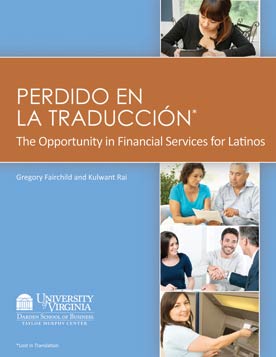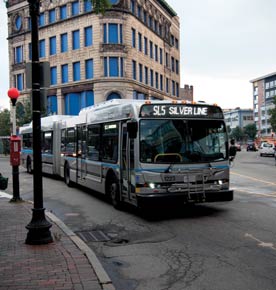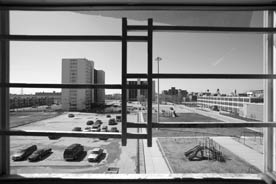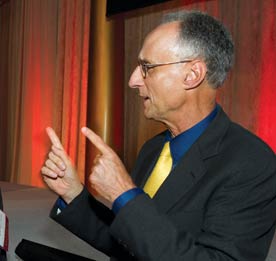We have long known that fewer local bank branches spells declines in financial investment in a community. As John Taylor, president and CEO of the National Community Reinvestment Coalition, pointed out in our Fall/Winter 2009 issue, the systemic closing of bank branches in low- and moderate-income neighborhoods is followed by payday lenders, pawnshops, and check cashing services stepping in to fill the void.
A new report out of UVA’s Darden School of Business, Perdido en la Traducción, looks at the positive flip side of this phenomenon: It finds that in low-income, Latino communities in Virginia when the number of community bank branches at which residents open accounts increases, neighborhood crime decreases, property values increase, and financial literacy improves.
There are almost 39,000 Latino households in Virginia that do not have savings or checking accounts with a bank or credit union. These unbanked households, the report goes on, generate on average $23,500 in annual income, “suggesting that at least $917 million annually is not being serviced by Virginia’s depository institutions.” Sounds like reversing the loss of bricks-and-mortar branches could be a win-win for neighborhoods and lenders.
More local bank branches might also help with the persistent disparities in access to conventional lending products in communities of color. As was reported earlier this year in the fifth annual installation of Paying More for the American Dream, a joint report compiled by several groups including the Woodstock Institute and the Neighborhood Economic Development Advocacy Project, which examined seven U.S. metro areas, certain neighborhoods are still faring disproportionately badly when it comes to access to credit.
In 2008 and 2009, the number of conventional refinance loans made in predominantly white neighborhoods in the American Dream’s study area “more than doubled in all seven cities examined. During this time, however, conventional refinance lending declined sharply in communities of color in all but one of the seven cities examined.”





Comments